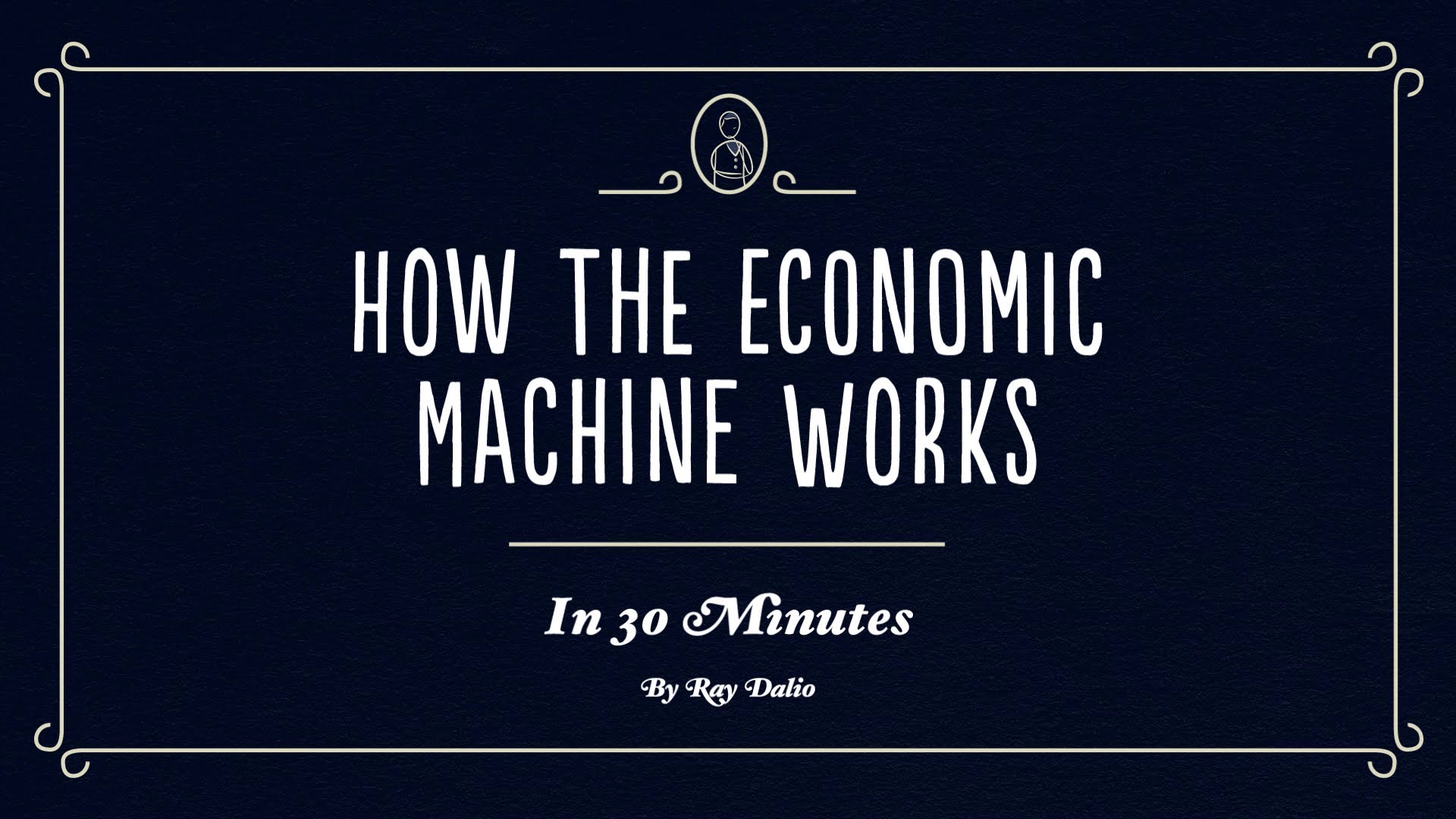What follows is a brief analysis of the legendary investor Ray Dalio’s popular video, ‘How the Economic Machine Works’, by a student who wishes to remain anonymous.
In the piece ‘How The Economic Machine Works’, Ray Dalio succinctly explains the mechanics of the Keynesian Experiment of the 20th century.
The fundamental principle of the Keynesian School of Economic Theory as illustrated by Dalio is that ‘Spending is how an economy grows‘, and spending is measured by the circulating supply of money and available credit in the market.
He goes on to explain the fiat monetary system which was established with the founding of the Federal Reserve in 1913, with the job to manage the monetary aspects of the economy. Largely the Fed does this by controlling interest rates and currency supply. He puts it very well when he superimposes the function of Productivity, Short Term Debt Cycle and the Long Term Debt Cycle. He does a good job of explaining what has happened but is unable to diagnose the why as the system is based on many fallacies and unverified assumptions.
In the following paragraphs I will lay down some fundamental principles and explore why the functions behave as they have done in the past 100 years. For the sake of brevity I will keep it short and invite you for further discussion.
An economy grows not because of spending but, savings. It helps to think from first principles, starting from zero one can only improve one’s life by investing time and effort in creating capital which can then be invested to provide future growth. This requires sacrificing immediate benefit for higher future benefit, e.g. education. Debt is borrowing from the future to consume today while savings are sacrificing today’s consumption for a higher return in the future. The principle being you can only spend what you have and growth happens in the manner in which you spend it.
As for the business cycles, they are primarily caused by either natural causes or unnatural causes. Natural causes are simply acts of God while there are many unnatural causes which are always induced by manual intervention. I will deal with the two mentioned in Dalio’s piece:
Manipulation of Interest Rates (Credit Expansion)
In the fiat monetary system, interest rates function to alter the natural incentives of the market participants, as explained in the video, when the interest are high people are risk averse and vice versa. In the Business Cycle Part 2 we learn how altering incentives actually made the cycle worse.
When interest rates are artificially lower, individuals, businesses and even governments borrow more to consume more right now or to grow their business because the perceived cost and risk of these decisions has been lowered. These decisions would otherwise not have been taken had they known the real cost and risk. This leads to over spending, bad investments, unfinished projects and wastage of capital viz. time, money and effort.
Manipulation of the Currency Supply
The problem here is two fold viz. Inflation and the Cantillon Effect. The Cantillon Effect states that in a Fiat Economy the people closest to the source of currency production benefit the most. This is because they are able to buy assets at the current market price where market participants are not yet aware of the new currency supply. As the currency trickles down the economy the information spreads, inflation kicks in and destroys the purchasing power of the people at the bottom. Inflation on the other hand makes it increasingly hard for people to store value long term which results in people constantly having to increase their income to keep up with the rising prices where the poorest and the elderly suffer the most.
The fallacy here is that according to the Keynesian School, the complex machinery of economy needs to be managed. The problem here is of Economic Calculation and central planning.
As is demonstrated by every economy that has implemented it throughout history which always leads to distortion of price discovery, risk and incentives of market participants. There is no way for them to gauge the opportunity cost of alternative uses of their resources leading to their misallocation. This is what creates the boom and then the bust, mechanics of which Dalio does a great job of explaining.
In a naturally occurring business cycle, growth is a direct result of improvements in productivity, technology and the collective savings of the society. The function of recession in such a cycle is to weed out inefficient allocation of resources. There is no lender of last resort to keep a failing company alive. They will have to liquidate their assets which will be reallocated by more efficient participants. But, with the lender of last resort, such companies are kept alive aka Zombie companies by easy credit and currency printed out of thin air (quantitative easing, bailouts), continuing the misallocation of resources and debasing everyone else’s purchasing power through inflation.
In summary, the business cycles that we have seen since 1920 are a direct result of the manipulation of people’s incentives and distortion of risk by way of credit expansion and money supply which was only possible such to preposterous proportions with the fractional reserve banking in it’s current iteration established in 1913.
For further reading in increasing order of complexity:
- Economics In One Lesson, by Henry Hazlitt
- Monetary Theory and the Trade Cycle, Frederich A Hayek
- Human Action, by Ludwig Von Mises
